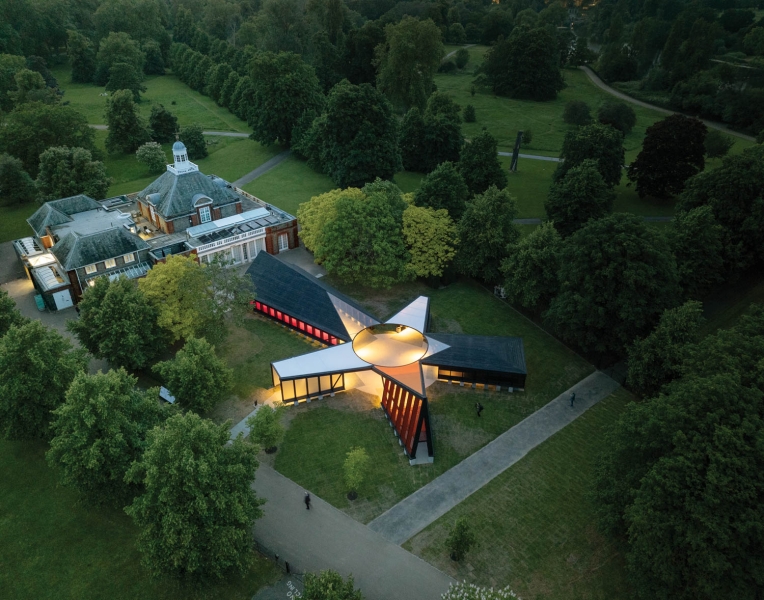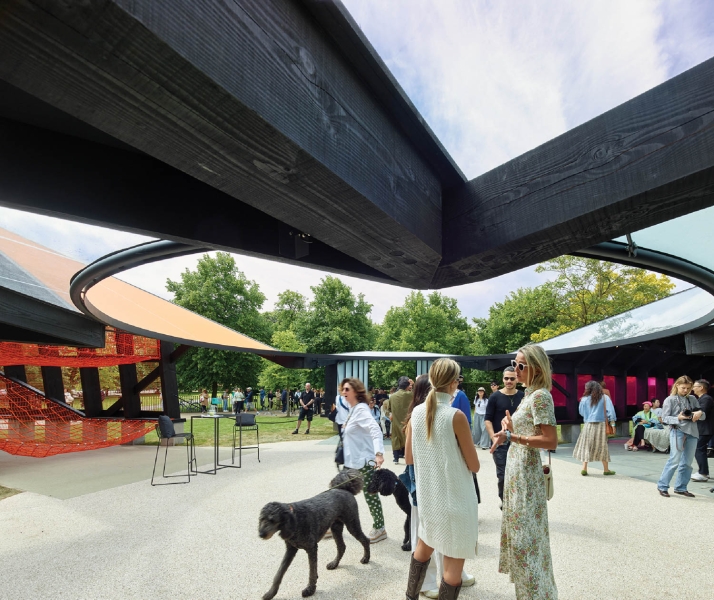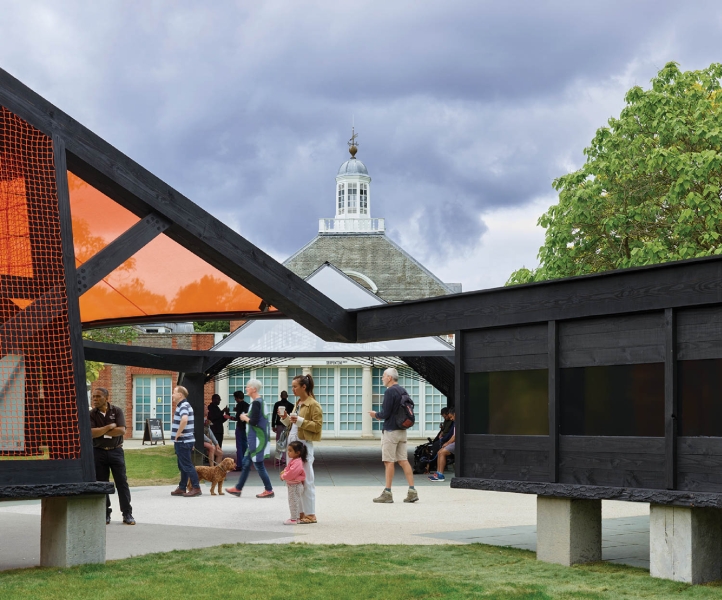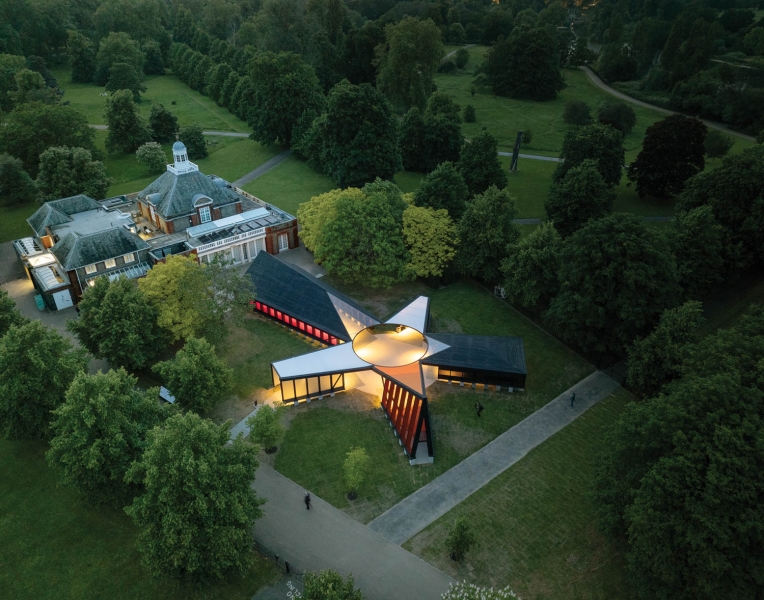For two decades, London’s Serpentine Pavilion, the summer installation commissioned annually to a different architect, has drawn throngs of attendees—some 1 million in recent years. So it was particularly unusual that when Minsuk Cho visited in 2005, when Álvaro Siza and Eduardo Souto de Moura had designed it, he found himself totally alone with the structure, reflecting on the nature of that particular public space. “It offered a spectrum of experiences,” the architect recalls thinking, “from quiet introspection to exhilarating collective moments.”
That was two years after Cho had founded his firm, Mass Studies, in his hometown of Seoul, South Korea. And it’s now that his Archipelagic Void is the Serpentine Pavilion 2024, providing its own range of experiences via a starlike structure with a 26-foot-diameter empty space at its center. Radiating off it are five semi-enclosed structures, or “islands,” in locally sourced Douglas fir, each a different shape and hub for activity—the diversity making Cho’s creation unique from previous, which typically were one distinct atmosphere. “This is more like a cinematic montage,” he says. There’s climbable netting in the Play Tower; a Tea House, referencing the adjacent Serpentine Gallery’s original use; and the Gallery, with an immersive sound installation by musician and fellow South Korean Jang Young-Gyu.
In fact, it’s the courtyards of hanoks, traditional Korean homes, and their function as a gathering place that inspired Archipelagic Void’s open-air core. “It’s an inversion of the usual configuration,” Cho explains—and his contribution to the shared spaces that are so essential to urban fabric.




